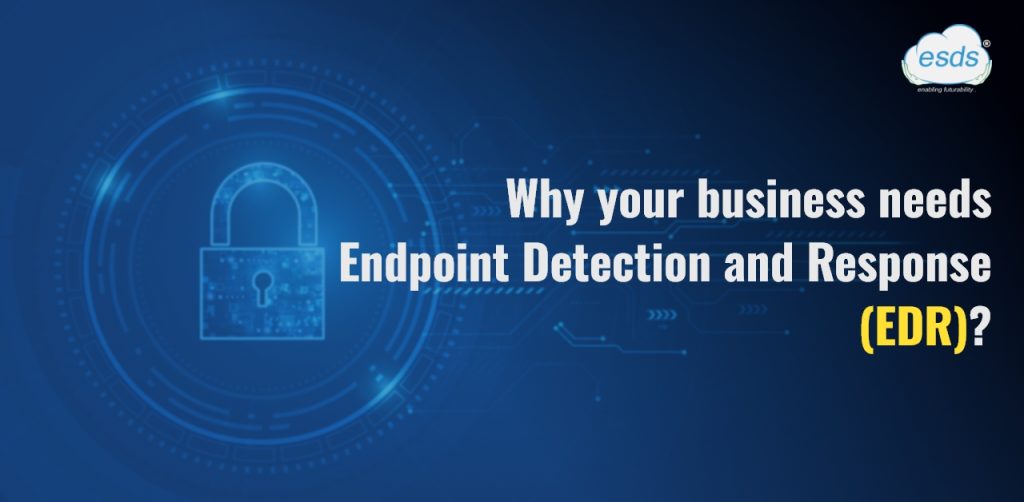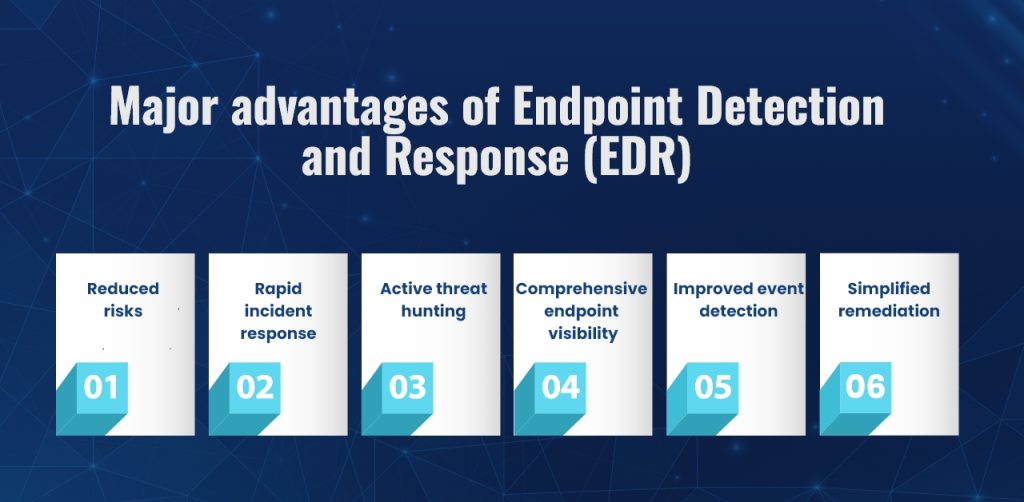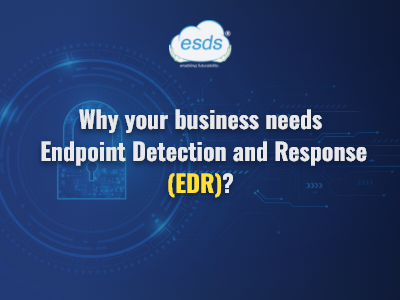Why does your business need Endpoint Detection and Response (EDR)?

Endpoint detection and response (EDR) is an integral part of today’s cybersecurity initiatives. It is an advanced endpoint security solution designed to continuously monitor and protect end-user devices from cyber threats such as ransomware and malware. EDR provides organizations with ultimate visibility, enabling them to better detect, analyze, and respond to security incidents.
How does EDR work?
EDR (Endpoint Detection and Response) solutions work by continuously monitoring and recording activity and events on endpoints. This includes workstations, laptops, desktops, servers, and other devices. By analyzing this information in real-time, the EDR solution can identify suspicious behavior and potential threats. Key functions of EDR include:
1. Endpoint tracking
EDR solutions provide end-to-end real-time visibility, enabling security teams to identify adversary activity even as they attempt to breach the environment This visibility enables organizations to take immediate mitigation action to threats down and data breaches are prevented.
2. Threat database
Effective EDR relies on a comprehensive threat database, with lots of telemetry collected from endpoints. This database is rich in context and signs of attacks can be mined using a variety of analytical techniques.
3. Behavioral driven approaches
Unlike traditional antivirus solutions that rely on signature-based methods or indicator-of-omissions (IOCs), EDR uses behavioral techniques. It detects indications of attack (IOA) to identify suspicious activities prior to engagement and to detect threats early.
4. Insight and Intelligence
EDR solutions integrate threat intelligence to provide information about attackers, including details and details of the attack. This helps organizations understand the sentiments and tactics used by adversaries, enabling them to respond more effectively.
5. Quick response
EDR enables security teams to address security incidents more quickly and accurately. By leveraging real-time data and reporting, organizations can stop attacks before they escalate into full-blown breaches, minimizing the impact on their operations.
6. Cloud-based solutions
Cloud-based EDR solutions offer a number of benefits, including zero impact on endpoints and the ability to perform detection, analysis, and tracing tasks accurately and in real-time This architecture ensures scalability, and flexibility and is easy to maintain.
Major advantages of EDR –

Implementing an EDR solution provides organizations with several key benefits. Here are some of the best Endpoint Detection and Response benefits.
1. Reduced risks
EDR solutions use advanced analytics and action detection techniques to identify intrusive and sophisticated threats that can evade traditional security measures. This improves overall threat detection capabilities and reduces the risk of a successful attack.
2. Rapid incident response
With real-time visibility and artificial intelligence, EDR empowers security teams to respond faster and more effectively to security incidents. This helps reduce the time between detection and action, reducing the potential impact of a cyberattack.
3. Active threat hunting
EDR solutions use advanced analytics and threat intelligence to provide proactive threat hunting. Security teams can proactively search for potential threats and stop clues, allowing threats to be detected and eliminated before serious damage is done.
4. Comprehensive endpoint visibility
EDR provides organizations with detailed visibility into end-user activity, enabling them to monitor and track security-related issues. This visibility helps organizations understand adversary behavior, identify malicious behavior, and gather valuable forensic evidence.
5. Improved event detection
EDR solutions store endpoint data on a centralized cloud-based platform, allowing security teams to quickly investigate incidents. The ability to analyze historical and real-time data, combined with integrated reporting, helps organizations deepen their understanding of security incidents and facilitate effective incident response.
6. Simplified remediation
EDR solutions provide fast and decisive closure capabilities. Security teams can isolate damaged endpoints from the network, preventing further damage and enabling immediate repair.
Summary
EDR provides advanced threat detection, proactive threat hunting, real-time visibility, and comprehensive endpoint protection. While antivirus solutions are still essential in addressing known threats, EDR goes beyond traditional antivirus capabilities to effectively identify and respond to known and unknown threats.
ESDS provides EDR solutions as an integral part of cybersecurity strategies, providing organizations with enhanced security, enhanced incident response capabilities, and enhanced endpoint visibility Implementing EDR solutions enables organizations to enforce them strengthen security postures, and reduce the risk of successful cyberattacks.
- Why does your business need Endpoint Detection and Response (EDR)? - May 15, 2024
- Are your business endpoints completely secure? - March 26, 2024
- Is Colocation key to transforming your data center management strategy? - March 22, 2024

